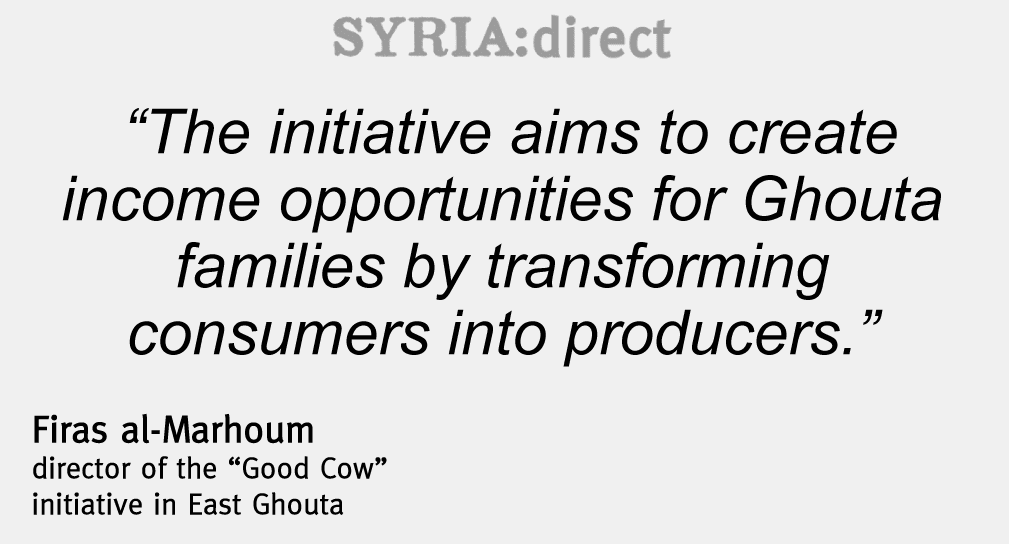Dairy cows provide milk for encircled East Ghouta
Prior to the outbreak of war in late 2011, Syria […]
23 February 2016
Prior to the outbreak of war in late 2011, Syria was the only country in the region self-sufficient in agricultural production.
Today, farm profits have fallen by 25-30 percent, with half the number of Syria’s pre-war livestock, according to a 2015 report by the UN’s Food and Agricultural Organization (FAO).
“Syria’s food chain is disintegrating–from production to markets–and entire livelihood systems are collapsing,” stated another FAO report from 2014.
In response, the Austria-based International Humanitarian Relief organization (IHR) provided 31 farmers in East Ghouta last December with dairy cows to replace livestock lost during the war.
Firas al-Marhoum, the Director of the IHR project in East Ghouta, declined to disclose how the cows entered the east Damascus suburbs, which have been totally surrounded by regime forces since June 2012.
The point of the project, he tells Syria Direct’s Hiba a-Shami, is to “create income-generating opportunities for Ghouta families by transforming consumers into producers.”

Q: What is the “Good Cow” (Baqrat Khair) Initiative?
The “Good Cow” project is a development initiative launched by the International Humanitarian Relief (IHR) organization in East Ghouta. The project provided 31 cows to farmers in the besieged East Ghouta area who lost their livestock as a result of the ongoing five-year war.
In the first phase of the project, IHR provided the farmers with dairy cows and feed sufficient for three months. In the second phase, we purchase milk from the farmers and sell it in local markets at a subsidized price. So far more than 1,000 people have benefited from the subsidized milk.
The initiative aims to create income-generating opportunities for Ghouta families by transforming consumers into producers.
Q: How did IHR select farmers to participate in the project?
Participating farmers were required to meet the requirements set by IHR, including owning their own stable and at least 2 dunums (2,000 square meters) of land for grazing. Additionally, farmers were required to pass an animal husbandry test administered by a committee of veterinarians. Finally, IHR worked to select farmers with land outside areas of intense shelling.







